April 16, 2021
By Yucef Merhi, curator of digital collections
For hundreds of years, coffee has been an essential part of our daily lives. Though one of the most consumed beverages in the world, it is also an exceptionally controversial one, with everyone from health experts to sultans, popes, and presidents arguing over the advantages and disadvantages of coffee consumption. In 1824, Thomas Jefferson said that coffee had become "the favorite drink of the civilized world"—and he was right.
The Wolfsonian has a remarkable collection of coffee-related items: books, posters, drawings, photographs, coffee sets, coffee machines, coffee percolators, furniture for coffee utensils, and more. Just before the pandemic erupted, we displayed a set of three coffee tins alongside hundreds of other compelling objects, now available in our Shelf-Aware digital interactive, in the exhibition A Universe of Things: Micky Wolfson Collects. However, when we reviewed their metadata and noticed some missing information, we found ourselves heading down a rabbit hole of research that led us through the history of decaffeinated coffee production and marketing.
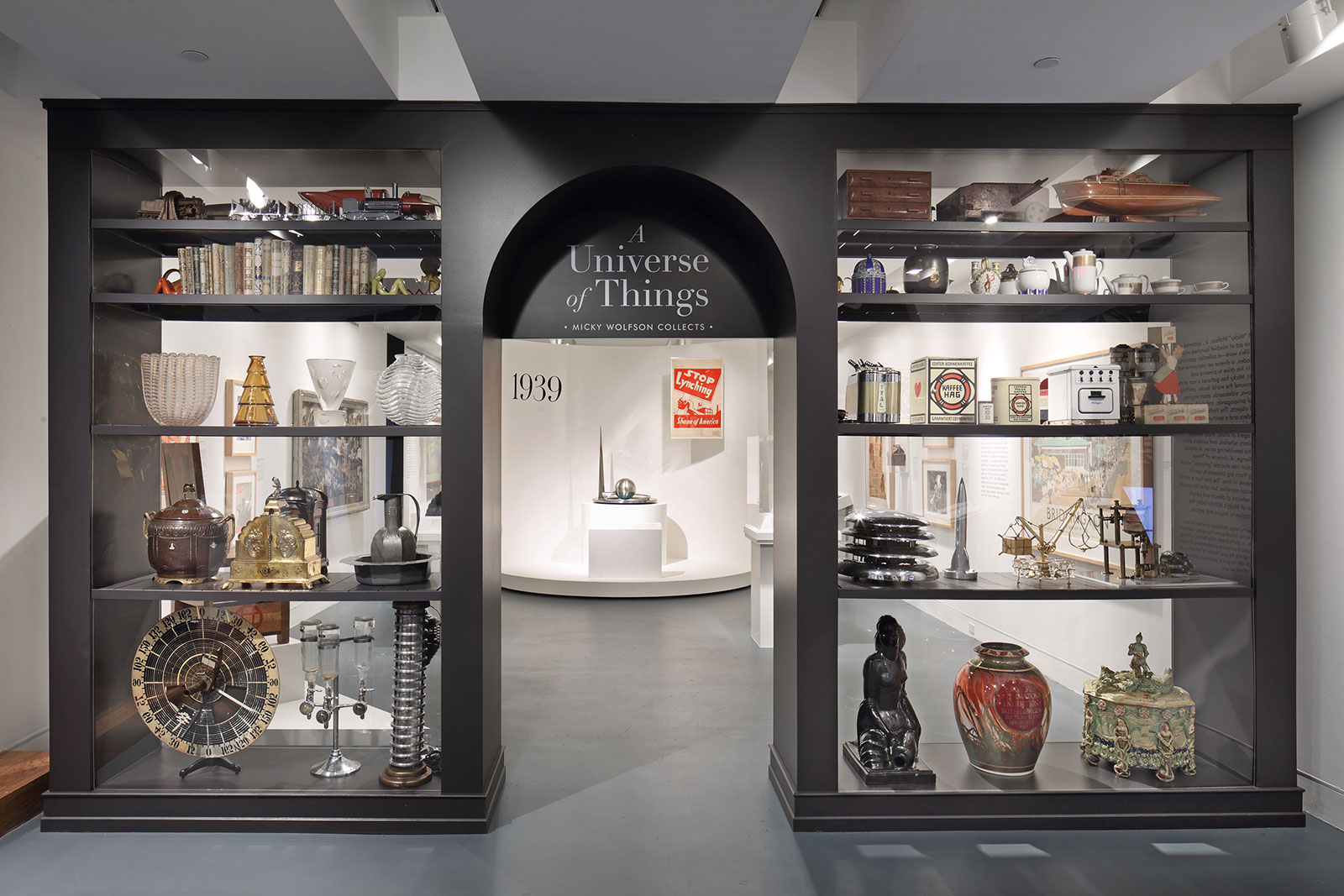
We knew that the three variations of cream metal canisters for coffee were manufactured around a century ago in Bremen, Germany, by a company named Kaffee Hag. Not only was Kaffee Hag the very first brand of decaffeinated coffee, but in 1908 founder Ludwig Roselius secured two U.S. patents (US897763A and US897840A) for extracting caffeine from green coffee beans without materially impairing the coffee's aromatic quality. It is unknown if the process was harmful to human health—considering the chemicals involved in decomposing caffeine salts with ammonia and washing out the free caffeine with chloroform or benzine—but it is clear that the brand pioneered decaffeinated coffee and even became synonymous with decaf.
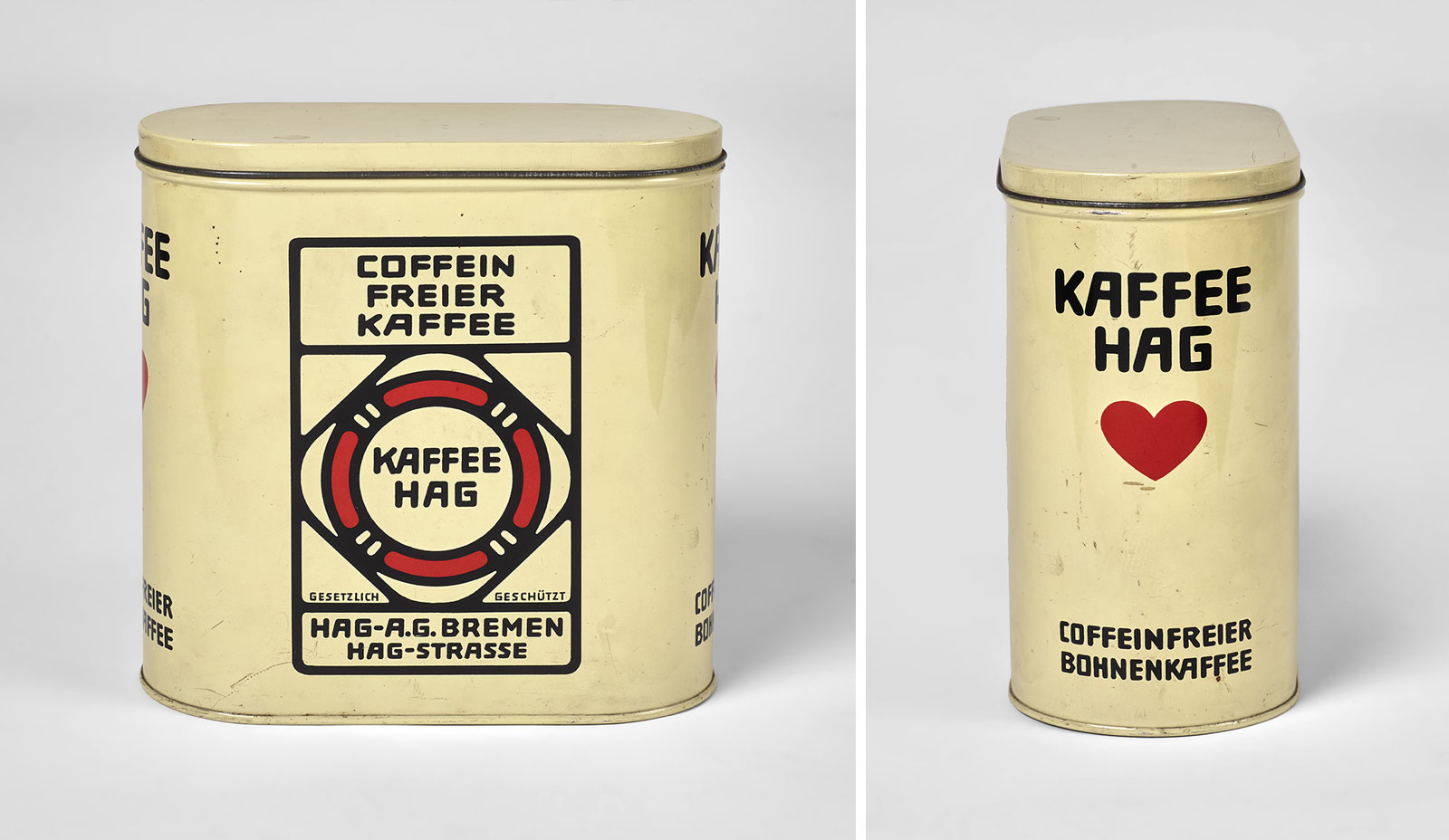
Kaffee HAG (short for Kaffee Handels-Aktien-Gesellschaft, or Coffee Trading Company) was founded by Roselius in 1906. The company expanded its operations throughout Europe at a very fast pace, adapting the brand to local markets. In France, for example, Kaffee Hag was known as Sanka, a contraction of sans caféine, or without caffeine. In the United States, it was first named Dekafa. Around 1909, the company increased its presence in the American market, and in 1914, Roselius established the U.S. headquarters in New York. The popularity of Kaffee Hag kept growing over the years, and by 1944, it was offered in the menu of the House of Representatives Restaurant as one of the featured beverages. Interestingly, its price was triple that of a regular, caffeinated cup of coffee.
Success was swift. The innovative decaffeinated coffee was distributed in over 50 countries, from Afghanistan to Australia, Iceland to India, Sweden to Zambia. During the course of several decades, many well-known companies partnered, distributed, produced, and even acquired the Kaffee Hag brand, including Merck & Co., Kellogg's, General Foods, and Kraft Foods.
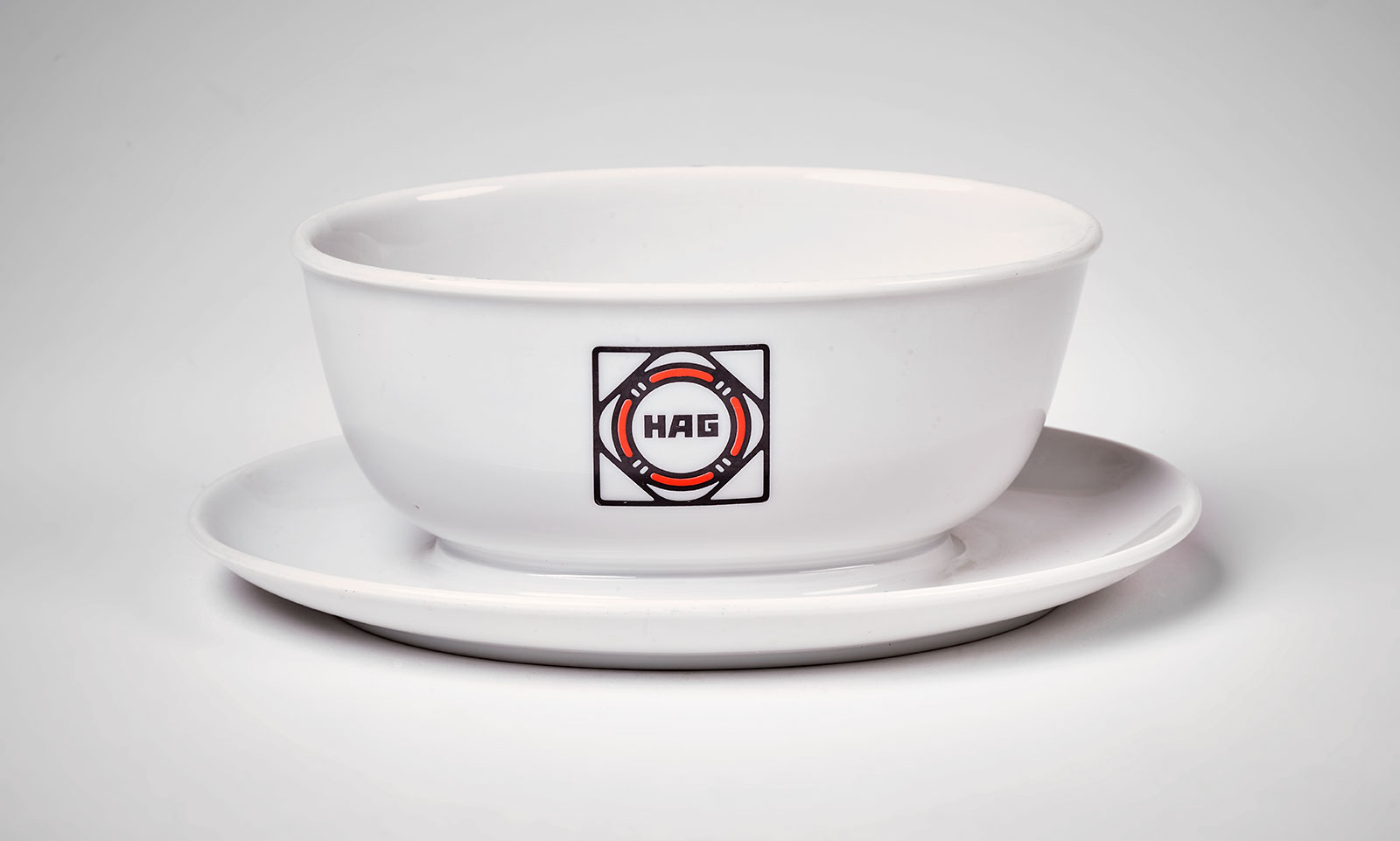
Roselius was a true entrepreneur, a corporatist and expansionist, who seized every opportunity and medium to build a product brand that would last for more than 100 years. High quality, constant price, and unvarying design were his principles. He purposefully practiced the combination of many of the marketing tools still used today, and from the very beginning of his ambitious commercial operation, he provided the media with medical reports showing the purported benefits of his decaffeinated coffee—a strategy that he kept applying for many years.
But Roselius, who was also a devoted champion of German art, had an authoritarian leadership style and supported national socialism. In 1917 he was appointed Consul General of Bulgaria, with an office in Bremen. He privately met with Hitler five years later and was asked to provide financial support; nevertheless, his attempts to join the Nazi Party failed. The reasons are not immediately apparent, but it seems that a few factors might have played a negative role in his future political undertakings: his affinity to Freemasonry; his support to artists that were members of the Communist party; and his involvement in the re-erection of the Böttcherstraße (a 354-ft-long street located in Bremen's historic center) with buildings that didn't match the aesthetics of the Nazi ideal.
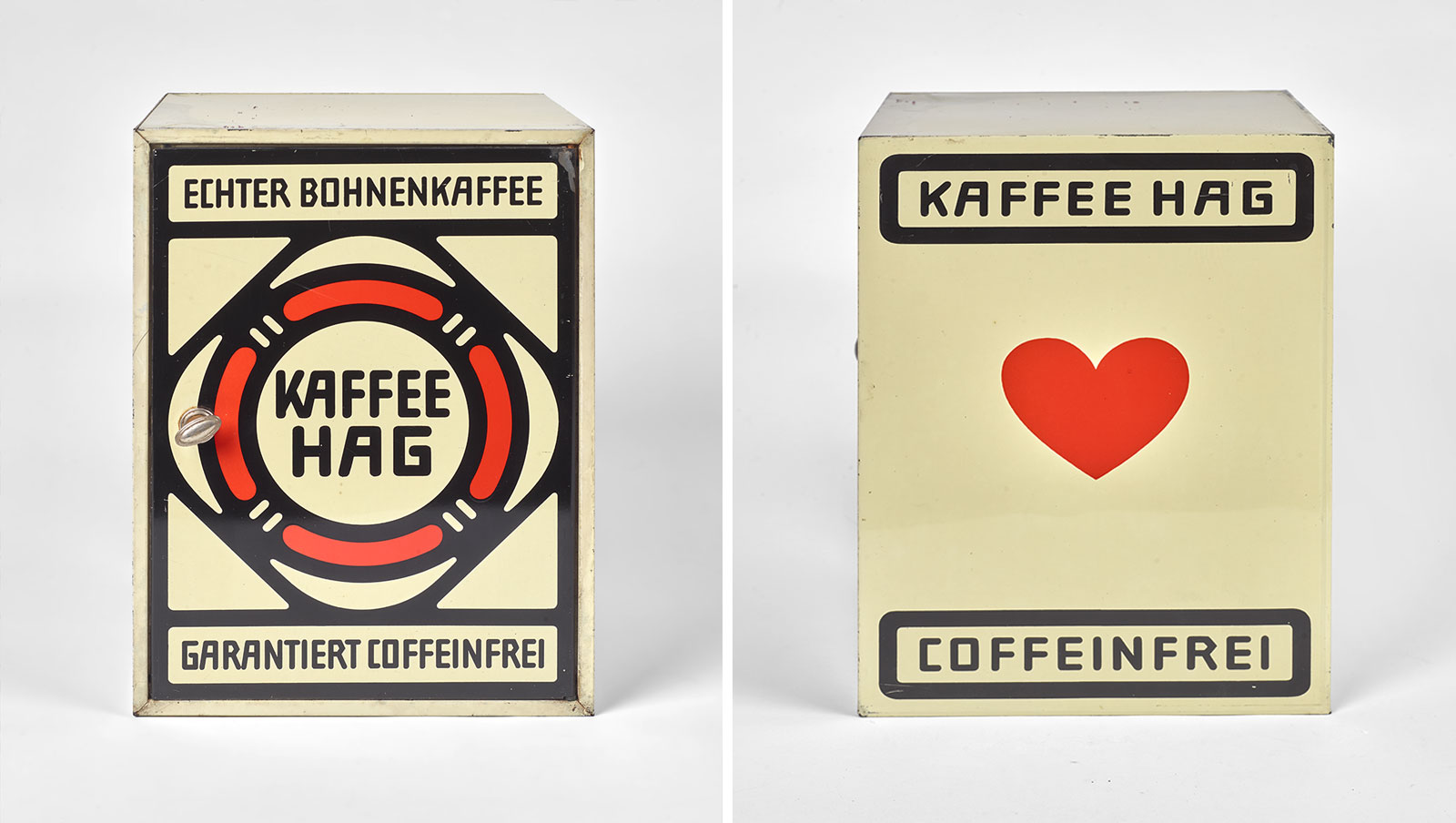
Roselius was aware of the power of propaganda. Since the beginning of his commercial venture, marketing and advertisement became as important as the quality of his product. He hired two graphic designers and architects, Alfred Runge and Eduard Scotland, to create the graphic identity of Kaffee Hag and, later on, design a large number of buildings on the Böttcherstraße. Runge and Scotland came up with a clean and elegant design using three bold and eye-catching colors—white, black, and red—which highlighted Kaffee Hag's trademark, a red lifebuoy, signaling protection from the negative effects of caffeine.
We found that two of our Kaffee Hag coffee tins displayed hearts in addition to the emblematic lifebuoy. It turned out that the hearts weren't part of the original design! The red heart was introduced as a second trademark in 1925, seven years after the end of the First World War. The heart triggered new slogans and a global campaign that was embraced by other sister brands, such as Sanka. A third and smaller coffee canister doesn't depict any hearts on the package design, but there is a description on the back that mentions the distribution of the Sanka brand name in America, which took place after 1924–25. Sanka appeared in the American market when Kaffee Hag was confiscated by the Office of Alien Property Custodian in 1917 because it was considered an enemy property. This circumstance pushed Roselius to adjust his business in the U.S. and find a new approach to keeping his invention the favored decaffeinated drink for many, many years.
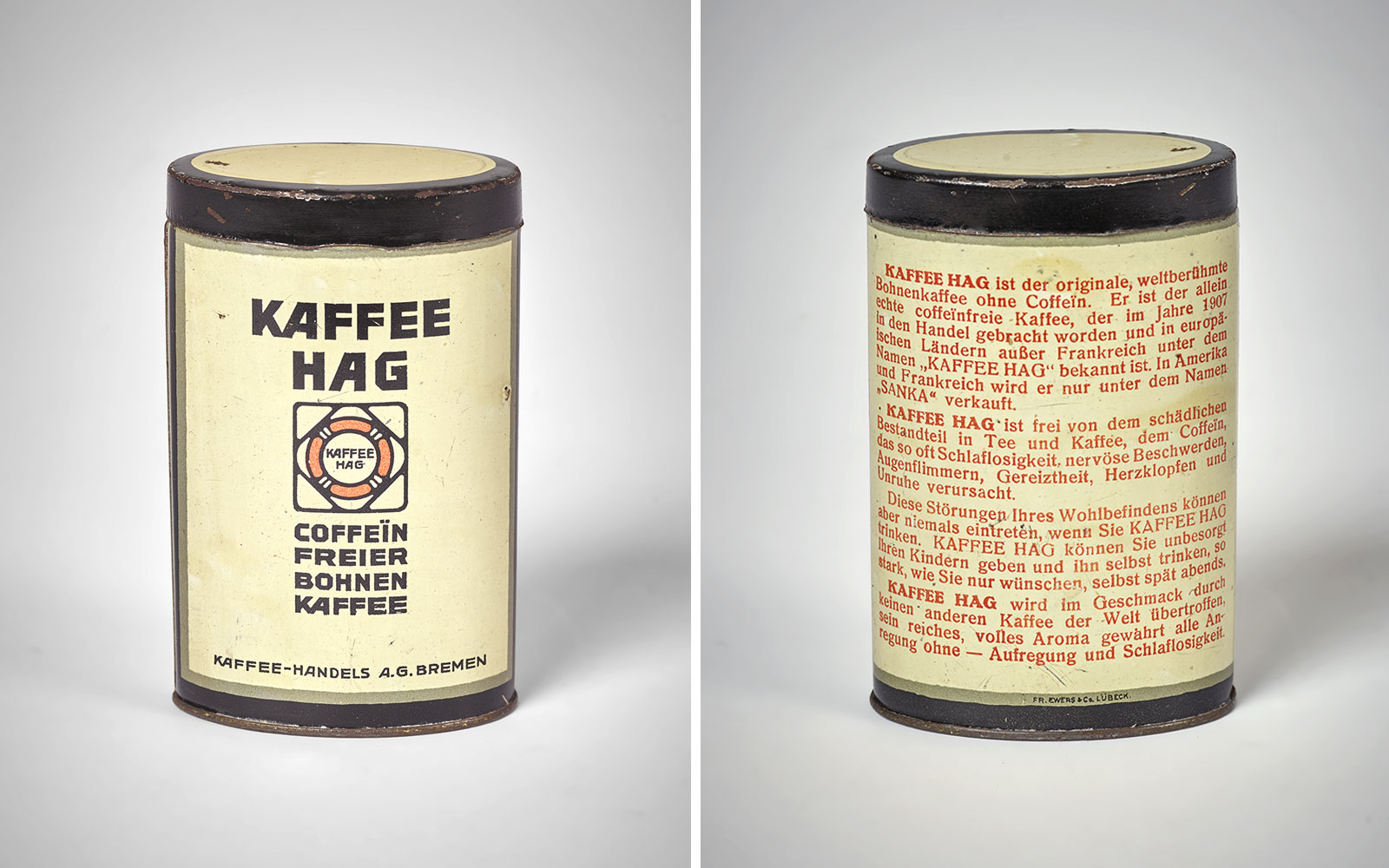
Today, 115 years later, the brand is managed by the Italian office of Jacobs Douwe Egberts. Italy, a fervent consumer of coffee, initiated the production of Caffé Hag in the early 1950s. So, to end this post, here is a promotional animation produced by Crippa & Berger in 1956. Enjoy!
Acknowledgments: I want to thank Horst Temmen, publisher at Edition Temmen, for providing access to the book 100 Jahre Kaffee HAG (2006; ISBN 978-3-86108-082-4).
